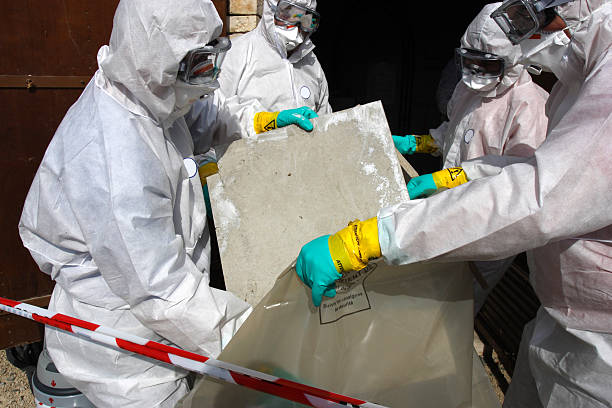The ability to “recover” from asbestos exposure is limited to managing symptoms and preventing further harm rather than curing the conditions caused by the exposure.
Can Your Body Get Rid Of Asbestos?

The human body cannot eliminate asbestos dust once they are inhaled or ingested. Asbestos fibers are highly durable and resistant to breakdown by the body’s natural defense mechanisms.
Here’s a concise explanation:
- Durability of Asbestos Fibers: Asbestos fibers are chemically inert and resilient, meaning they resist breakdown within the body. Once they penetrate lung tissue or other internal organs, they remain there.
- Inhalation Impact: When asbestos fibers are inhaled, they can lodge in the lining of the lungs (pleura), causing inflammation and scarring. This can lead to diseases like asbestosis or pleural plaques.
- Cellular Impact: In some cases, these fibers can cause genetic mutations in cells, potentially resulting in cancers like mesothelioma or lung cancer over long periods.
- Ingestion Impact: Ingesting asbestos fibers can lead to their accumulation in the digestive tract, which might contribute to gastrointestinal cancers.
Once asbestos fibers are inside the body, they remain embedded due to their durability, creating a risk of chronic inflammation and long-term health issues.
Recovery Options For Asbestos-Related Disease

Recovery options for asbestos exposure focus on symptom management and palliative care, as no cure currently exists for other asbestos-related diseases.
Here are the key treatments available:
- Surgery: In specific cases like early-stage mesothelioma or lung cancer, surgery may be used to remove tumors or affected lung tissues, potentially extending patient survival.
- Chemotherapy: Chemotherapy uses drugs to slow the progression of asbestos-related cancers. It’s often combined with surgery or radiation therapy to increase effectiveness.
- Radiation Therapy: High-dose radiation targets cancer cells to reduce tumor size and relieve symptoms. It is frequently used with surgery and chemotherapy for improved results.
- Medications: For non-cancerous conditions like asbestosis, medications such as corticosteroids and bronchodilators may reduce inflammation and ease breathing.
- Pulmonary Rehabilitation: This program includes oxygen therapy, lung function tests and breathing techniques to enhance lung function and reduce shortness of breath.
- Palliative Care: Palliative care focuses on improving the quality of life by managing pain, fatigue, and emotional distress for those with advanced lung diseases.
- Clinical Trials: Some patients may benefit from participating in clinical trials testing new therapies and combinations.
Each treatment plan is personalized based on disease stage, patient health, and specific needs.
Preventive Measures For Asbestos Exposure

Preventive measures are essential for minimizing asbestos exposure risks. Here’s an overview of how individuals and industries can protect themselves:
- Identification of Asbestos-Containing Materials (ACMs): Asbestos workers should conduct thorough surveys and risk assessments in older buildings to identify ACMs before starting any renovation or demolition work.
- Personal Protective Equipment (PPE): Workers handling asbestos should use appropriate PPE, including respirators, disposable coveralls, and gloves, to prevent direct contact.
- Engineering Controls: Use ventilation systems with HEPA filters in enclosed spaces to limit airborne asbestos fiber concentrations. Apply wet methods or specialized vacuums to reduce airborne particles during asbestos products removal.
- Workplace Safety Protocols: Establish regulated areas where only authorized and trained personnel can access. Ensure that workers are trained on safe handling practices, decontamination, and emergency procedures.
- Regulations and Compliance: Follow governmental guidelines and industry standards for asbestos handling, such as the Occupational Safety and Health Administration (OSHA) regulations.
- Proper Disposal: Dispose of asbestos materials at licensed disposal facilities using designated, sealed, and labeled containers to prevent contamination.
- Public Awareness: Educate the public on the dangers of disturbing potential ACMs at home and encourage consultation with licensed asbestos professionals.
These measures significantly reduce the risk of asbestos exposure for individuals and industries alike.

